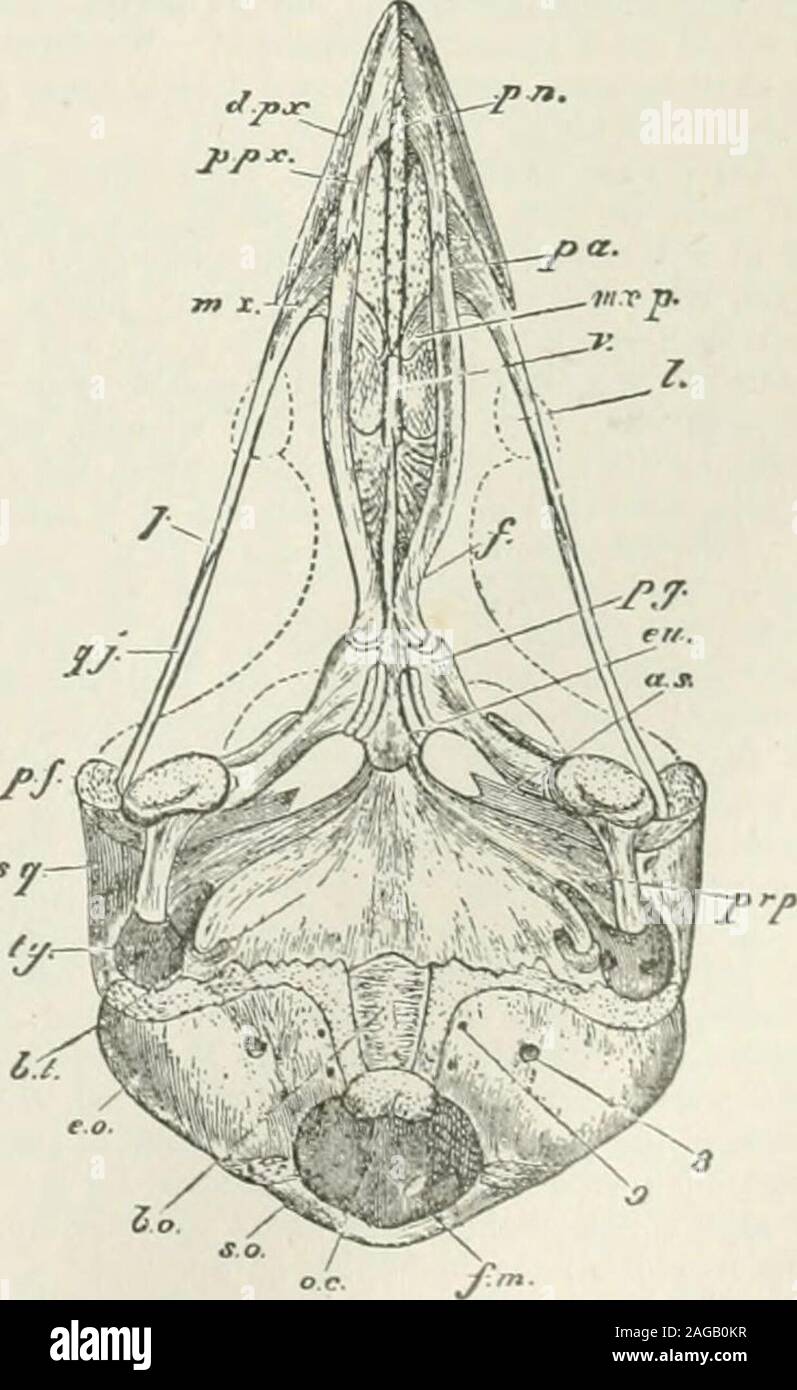. The Encyclopaedia Britannica; ... A dictionary of arts, sciences and general literature. s largely spreading (thetwo lesser ossicles are appearing, but will be better shownin the next stage). The foramen ovale (5) is very large;it is bounded behind by the prootic, and in front by thealisphenoid (a.s.) This great wing has a large centralfenestra, round which the bone has crept. In somewhatyounger specimens this bony matter was in two patches,one above and another below the fenestra. The samething may be seen in arboreal birds, as the CommonSparrow. The stem of the alisphenoid almost meets its

Image details
Contributor:
The Reading Room / Alamy Stock PhotoImage ID:
2AGB0KRFile size:
7.1 MB (250.2 KB Compressed download)Releases:
Model - no | Property - noDo I need a release?Dimensions:
1238 x 2018 px | 21 x 34.2 cm | 8.3 x 13.5 inches | 150dpiMore information:
This image is a public domain image, which means either that copyright has expired in the image or the copyright holder has waived their copyright. Alamy charges you a fee for access to the high resolution copy of the image.
This image could have imperfections as it’s either historical or reportage.
. The Encyclopaedia Britannica; ... A dictionary of arts, sciences and general literature. s largely spreading (thetwo lesser ossicles are appearing, but will be better shownin the next stage). The foramen ovale (5) is very large;it is bounded behind by the prootic, and in front by thealisphenoid (a.s.) This great wing has a large centralfenestra, round which the bone has crept. In somewhatyounger specimens this bony matter was in two patches, one above and another below the fenestra. The samething may be seen in arboreal birds, as the CommonSparrow. The stem of the alisphenoid almost meets its fellow-process over the posterior clinoid wall (p.cl.) In thestem is seen a foramen rotundum. Outside, the ali-sphenoid has a thick, secondary, post-frontal (sphenotic) wing(pf.) The round pituitary space is walled in with bone. Itssecondary parasphenoidal floor has been removed. Wereserve a description of the fast-growing roof bones for thenext stage, when they are most instructive for comparisonwith those of Fishes and Reptiles. Craiium of Fowl—Fiilh Stage.—In a dav or two after. Fio. M.—Rlpo Chiefs head, IJ inch InTie: lower view. X l»i-ui«..l III. — 80 TOG B i R D R [anato:>iy. hatcning, the skull of the chicken is excellent for com-parison; as in Cattle, so in the Fowl and its relations, theiryMing ones are in good liking as soon as they appear ;heiice they are strong in bone and sinew verv early, thegrowth-processes taking place rapidly. The under view (fig. 13) shows, behind the orbits, a strongcranial box.. Synchondroses of the remainder of the chondro-cranium divide the endo-skeletal bone-tcrrjtories ; and thatorganic attraction which causes the perfect correlation ofthe shallow with the deeper layers of the mesoblast, hasgiven us here bony encasements, that not only fill in whatwas wanting in the chondro-cranium, but also overlie anddouble the strength of the ossified cartilage itself. Allis nea